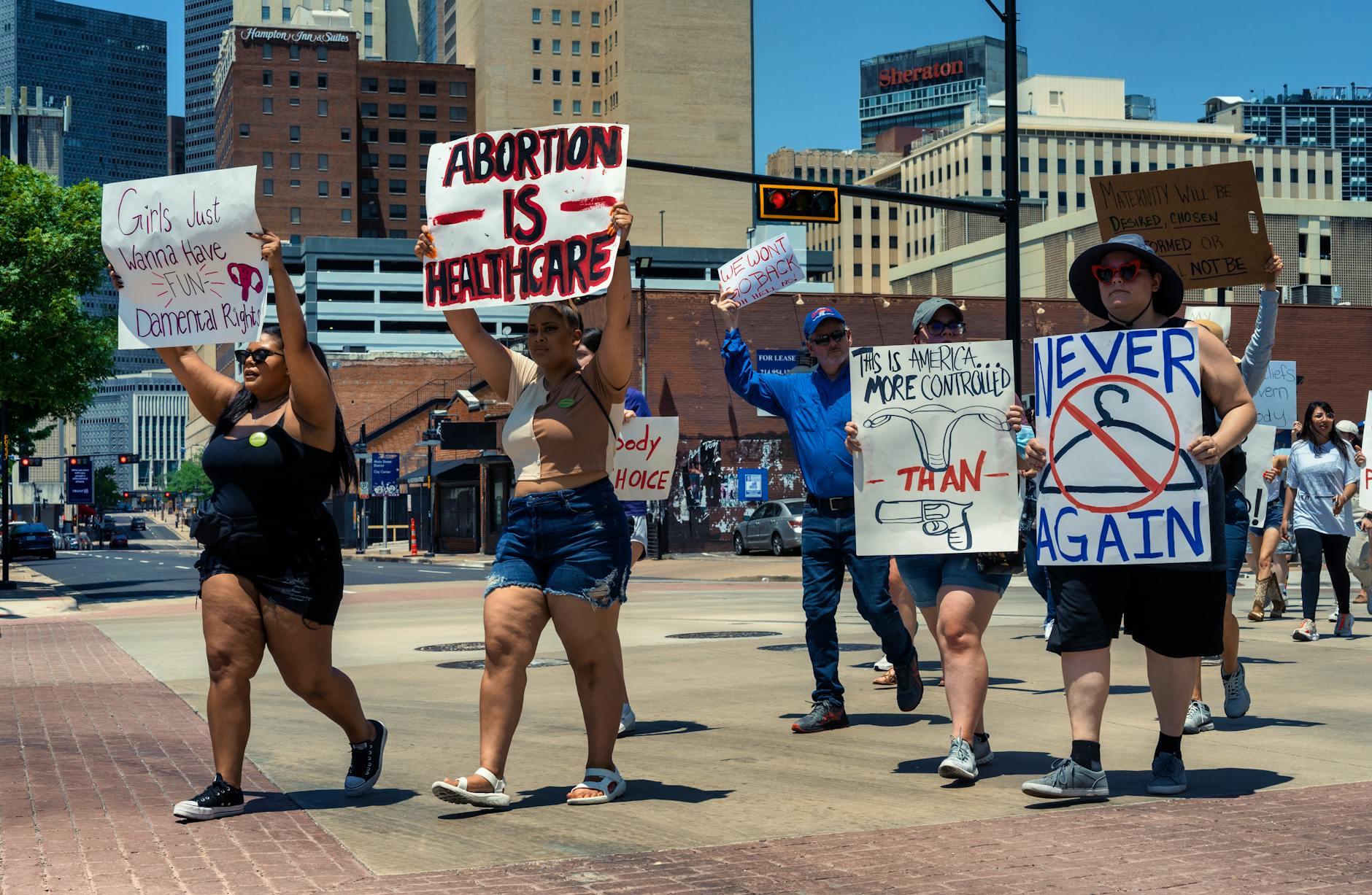Democracy Under Siege: Texas Democrats’ Flight Sparks Constitutional Crisis and Presidential Spectacle
As Texas Democrats’ bold stand against redistricting ignites a political firestorm, President Trump’s rooftop stroll offers a surreal backdrop to the nation’s deepening democratic divides.
The political landscape of the United States is currently a study in contrasts and escalating tensions. On one hand, a defiant act of protest by Texas Democrats, who fled the state to disrupt a legislative session over controversial redistricting maps, has thrown the Lone Star State into a constitutional crisis. On the other, President Trump’s seemingly innocuous, yet symbolically potent, rooftop stroll atop the White House offers a surreal visual amidst the high-stakes political maneuvering gripping the nation. These two seemingly disparate events, unfolding simultaneously, paint a vivid picture of a country grappling with fundamental questions about representation, power, and the very integrity of its democratic processes.
This article will delve into the intricacies of the Texas redistricting battle, examining the motivations behind the Democrats’ unprecedented departure, the legal and political ramifications of Governor Greg Abbott’s response, and the broader implications for democratic norms. We will also explore the symbolic weight of President Trump’s actions, considering how such imagery resonates in an era of heightened political polarization and anxieties about the stability of democratic institutions.
The events of August 5th, as highlighted in “The Takeout with Major Garrett,” serve as a critical inflection point, demanding a closer examination of the forces pulling at the fabric of American democracy. From the granular details of legislative maneuvering to the grand pronouncements and symbolic gestures of presidential behavior, the interconnectedness of these narratives reveals a nation at a crossroads.
Context & Background
The current political standoff in Texas is rooted in the decennial process of redistricting, a crucial exercise that redraws the boundaries of congressional and state legislative districts based on population shifts revealed by the U.S. Census. This process is inherently political, as the party in control of state legislatures often seeks to draw maps that favor their candidates, a practice known as gerrymandering.
In Texas, the Republican Party currently holds a significant majority in both the state House and Senate. Following the 2020 Census, the Republican-controlled legislature began the process of crafting new maps for congressional and state legislative districts. Democrats, and many civil rights organizations, argued that these proposed maps were designed to dilute the voting power of minority communities, particularly Latino and Black populations, and to entrench Republican dominance for the next decade, despite the state’s growing demographic diversity.
The Texas Constitution requires a quorum to conduct legislative business. To prevent the passage of what they deemed unfair maps, a sufficient number of Democratic members of the Texas House of Representatives, exceeding the threshold needed to break quorum, departed the state. Their stated aim was to deny the Republican majority the necessary votes to conduct business and therefore block the passage of the redistricting bill, as well as other legislative priorities.
Governor Greg Abbott, a Republican, swiftly condemned the Democrats’ actions, labeling them as an abdication of their responsibilities and a subversion of the democratic process. He vowed to use all available means to bring them back to the state capital, Austin, to complete their legislative duties. This response included threats of arrest, a legal mechanism available to governors to compel the attendance of absent legislators.
Meanwhile, the image of President Donald Trump taking a stroll on the roof of the White House, as noted in the summary, occurred against this backdrop of intense political turmoil. While the summary doesn’t elaborate on the specific context of Trump’s appearance on the roof, such actions from a former president, particularly one who has been a central figure in the nation’s political discourse and controversies, often carry symbolic weight. In a period of heightened partisan division and scrutiny of democratic norms, any public appearance by a figure as prominent as Trump can be interpreted through a political lens, even if unintended.
The legal and constitutional questions raised by the Texas Democrats’ actions are significant. Can a governor legally order the arrest of legislators for abandoning their posts to protest legislation? What are the limits of legislative protest, and how do they intersect with the fundamental right to dissent? These are not merely academic questions; they strike at the heart of representative government and the balance of power between different branches of government and within legislative bodies.
In-Depth Analysis
The Texas Democrats’ walkout is a strategic, albeit controversial, maneuver born out of a perceived existential threat to fair representation. Their core argument is that the proposed redistricting maps are a blatant attempt at partisan gerrymandering, designed to disenfranchise growing minority populations and solidify Republican control in a state that is rapidly diversifying. By denying quorum, they aim to stall the process, force negotiations, or at the very least, expose the Republican Party’s alleged undemocratic intentions to a wider audience.
Governor Abbott’s response, ordering the arrest of the absent Democrats, highlights a fundamental disagreement on the nature of legislative duty and the limits of protest. Abbott frames the Democrats’ actions as an abandonment of their constituents and a defiance of the legislative process. His assertion of executive authority to compel attendance through arrest is a potent, and potentially unprecedented, assertion of power. Legally, governors can often issue warrants for the arrest of absent members to ensure quorum, particularly in states where such provisions are written into law or legislative rules. However, the *political* implications of using law enforcement to retrieve lawmakers engaged in a protest are immense, risking an escalation of the conflict and potentially cementing the narrative of an authoritarian overreach.
The redistricting process itself is a critical battleground for political power. In Texas, the demographic shifts are undeniable. The state has seen significant growth, particularly among Hispanic and Asian populations. However, if the proposed maps are indeed drawn to minimize the voting impact of these growing demographics, it represents a direct challenge to the principle of “one person, one vote” and the notion that legislative districts should reflect the electorate accurately. Critics argue that such gerrymandering exacerbates political polarization by creating safe seats for incumbents and reducing the incentive for politicians to appeal to a broader base of voters.
The presence of President Trump on the White House roof, even if a simple visual, cannot be entirely divorced from the political context. In an era where Trump remains a dominant figure in the Republican Party and a vocal critic of the current administration and its policies, any public appearance is scrutinized for its symbolic meaning. While the summary provides minimal detail, such imagery can be interpreted in various ways: a demonstration of presidential presence, a deliberate distraction, or a reflection of the surreal nature of American politics. In the context of a brewing constitutional crisis in Texas, it offers a stark contrast between the quiet observation of a former leader and the seismic political battles unfolding on the ground.
The legal fight that will likely ensue will involve examining the scope of the governor’s authority, the rights of legislators, and the potential for judicial intervention. Courts have historically been reluctant to intervene in the internal workings of legislative bodies, but gerrymandering cases have often made their way to the judiciary. The question of whether the proposed maps violate the Voting Rights Act or the Equal Protection Clause of the Fourteenth Amendment will be central to any legal challenges.
Furthermore, the actions of the Texas Democrats have sparked debate about the effectiveness and ethics of legislative walkouts as a form of protest. While it is a tactic used historically to disrupt legislative proceedings, its success is often contingent on public opinion and the willingness of the opposing party to compromise. The risk for the Texas Democrats is that their absence could lead to their expulsion or censure, or that the Republicans could simply wait them out and pass the maps in a subsequent special session.
Pros and Cons
The actions taken by the Texas Democrats, and the responses they have elicited, can be analyzed by examining their potential benefits and drawbacks:
Pros of the Texas Democrats’ Walkout:
- Disruption of Potentially Unfair Maps: The primary objective is to prevent the passage of redistricting maps that Democrats believe are gerrymandered to disenfranchise minority voters and solidify Republican power. By denying quorum, they force a delay and create an opportunity for a more equitable outcome or, at least, public scrutiny of the Republican process.
- Raising National Awareness: The dramatic nature of the walkout brings national attention to the issue of redistricting and partisan gerrymandering in Texas. This increased visibility can galvanize public opinion and pressure lawmakers to consider fairness over partisan advantage.
- Assertion of Dissent and Political Power: The act is a powerful statement of defiance against what they perceive as an authoritarian push by the Republican majority. It demonstrates that a minority party can, in certain circumstances, exert leverage and disrupt the agenda of the majority.
- Potential for Negotiation or Compromise: By creating a legislative impasse, the Democrats may force Republicans to the negotiating table, potentially leading to some concessions or amendments to the proposed maps.
- Moral and Ethical Stand: For many, the walkout represents a principled stand against what they view as an undemocratic and unjust process, aligning with a commitment to fair representation for all Texans.
Cons of the Texas Democrats’ Walkout:
- Potential for Arrest and Legal Ramifications: Governor Abbott’s threat of arrest, and the potential for warrants to be issued, places the lawmakers in a legally precarious position. They could face penalties or challenges to their eligibility to serve.
- Alienation of the Public: Some voters, regardless of party affiliation, may view the absence of their representatives as an abandonment of their duties, potentially leading to public backlash.
- Inability to Address Other Legislative Issues: By refusing to participate, the Democrats also forfeit their ability to advocate for or against other crucial legislation that may benefit their constituents.
- Risk of Special Sessions and Map Passage: The Republicans can call additional special sessions, potentially continuing the legislative deadlock or finding ways to circumvent the quorum issue in the long run. If the Democrats are forced back without concessions, the maps could still pass.
- Setting a Precedent for Further Gridlock: While a tactic to fight gerrymandering, such extreme measures can contribute to a broader culture of legislative obstruction and partisanship, making future compromise more difficult.
Pros of Governor Abbott’s Response (Ordering Arrests):
- Upholding Legislative Procedures: From Abbott’s perspective, he is ensuring that the legislative process, as defined by state law and procedure, moves forward. He is enforcing the requirement for quorum to conduct business.
- Demonstration of Executive Authority: The governor is projecting an image of strong leadership and decisive action, reinforcing the power of his office to manage state affairs.
- Alleged Representation of Constituent Will: Abbott would argue that he is acting to ensure that the duly elected representatives are present to represent all their constituents, not just those who agree with a particular protest tactic.
Cons of Governor Abbott’s Response (Ordering Arrests):
- Potential for Political Persecution Narrative: The use of law enforcement to apprehend political opponents can be easily framed as political persecution, exacerbating divisions and eroding trust in government.
- Undermining Legislative Independence: Forcing legislators to attend sessions under threat of arrest can be seen as an overreach of executive power and an infringement on the independence of the legislative branch.
- Escalation of Conflict: Such aggressive tactics are likely to further entrench opposition and make any future attempts at bipartisan cooperation significantly more challenging.
- Legal Challenges: The legality and constitutionality of arresting legislators for absence due to protest could be challenged in court, leading to prolonged legal battles.
The appearance of President Trump on the White House roof, while not directly tied to the Texas events, can be analyzed for its symbolic impact:
- Symbol of Stability or Distraction: Depending on the viewer, it could be seen as a reassuring presence of a former president, or conversely, a deliberate distraction from more pressing national issues.
- Reinforcing Political Identity: For Trump supporters, it may reinforce his image as a figure who is still present and observing, perhaps even approving of certain political actions, though the specific context is missing.
- Highlighting a Divergent Political Landscape: It offers a visual contrast to the intense legislative battles, perhaps highlighting a perceived disconnect between political elites and the day-to-day functioning of government, or simply showcasing the ongoing media fascination with prominent political figures.
Key Takeaways
- Texas Democrats have fled the state to deny quorum and block the passage of controversial redistricting maps, which they argue are designed to suppress minority votes.
- Governor Greg Abbott has ordered the arrest of these absent Democrats, asserting his authority to ensure legislative business is conducted.
- This situation highlights a significant constitutional and political conflict over legislative duties, quorum requirements, and the use of executive power to compel legislative attendance.
- The core issue is partisan gerrymandering, with Democrats accusing Republicans of drawing maps to maintain power despite demographic shifts favoring Democratic and minority voters.
- The use of legislative walkouts as a protest tactic is a high-risk, high-reward strategy that can disrupt proceedings but also lead to negative repercussions for the absent lawmakers.
- President Trump’s appearance on the White House roof, while not directly linked to the Texas events, adds a layer of symbolic complexity to the national political narrative during a period of heightened polarization.
- The events raise fundamental questions about the integrity of democratic processes, the balance of power, and the rights of minority parties within legislative bodies.
Future Outlook
The situation in Texas is likely to remain volatile and could have far-reaching implications for the state and the nation. Several potential scenarios could unfold:
Continued Legislative Stalemate: The most immediate outlook is a continuation of the deadlock. Governor Abbott could call subsequent special sessions, and the Democrats could continue their defiance. This prolonged standoff could paralyze the legislative process in Texas, preventing action on not only redistricting but also other pressing state matters.
Legal Battles: The use of arrest warrants against legislators will almost certainly lead to significant legal challenges. Courts may be called upon to rule on the legality of the governor’s actions, the scope of legislative immunity, and the constitutionality of the proposed redistricting maps. These legal battles could take months, if not years, to resolve, potentially delaying the finalization of districts.
Electoral Consequences: The actions of both parties will undoubtedly have electoral consequences. The Democrats’ walkout could galvanize their base and attract sympathetic voters, but it could also alienate some undecided or moderate voters who prefer their representatives to be present and working. Conversely, the Republican Party’s push for the maps, and their response to the Democrats’ protest, could solidify their base but also energize opposition, particularly among minority groups.
Nationalization of the Issue: The Texas redistricting battle has already garnered national attention, and it is likely to become a focal point in broader discussions about voting rights and democratic norms across the country. The outcome in Texas could set precedents or influence similar struggles in other states.
Potential for Compromise (Less Likely): While unlikely given the current acrimony, there is always a possibility of a last-minute compromise if either side perceives a greater political cost in continuing the standoff. However, the deep ideological and partisan divides in Texas make this scenario improbable without significant external pressure or a shift in strategy.
The Role of President Trump: While the summary mentions President Trump’s rooftop stroll, his future involvement, if any, remains a subject of speculation. As a prominent figure, his endorsements or public statements can influence political dynamics. However, the direct impact of his specific actions on the Texas situation is likely symbolic rather than operational, unless he chooses to engage more directly.
Ultimately, the future of Texas redistricting will hinge on the interplay of legislative strategy, legal challenges, public opinion, and the enduring commitment of both parties to their respective political goals. The current trajectory suggests a period of prolonged conflict and intense political maneuvering.
Call to Action
The events unfolding in Texas and the broader political climate demand active engagement from citizens concerned about the health of American democracy. Understanding the complexities of redistricting, the rights of elected officials, and the implications of partisan power grabs is crucial for informed participation in the political process.
Educate Yourself and Others: Dive deeper into the specifics of the Texas redistricting proposals and the arguments presented by both sides. Share accurate information with your friends, family, and community to foster a more informed public discourse. Resources from non-partisan organizations like the League of Women Voters or election law experts can provide valuable insights.
Contact Your Representatives: Regardless of your state, reach out to your elected officials at all levels of government. Express your views on gerrymandering, voting rights, and the importance of fair representation. Let them know that you are paying attention and that you expect them to uphold democratic principles.
Support Advocacy Groups: Consider supporting organizations that are working to combat gerrymandering, protect voting rights, and promote fair electoral practices. These groups often engage in crucial legal challenges, legislative advocacy, and public awareness campaigns.
Participate in the Democratic Process: Register to vote, and encourage others to do so. Vote in every election, not just presidential ones. Local elections and midterms often have a significant impact on the issues that affect your daily life, including the drawing of legislative maps.
Hold Leaders Accountable: Demand transparency and accountability from your elected officials. Question their motives and their actions. If you believe they are acting in ways that undermine democratic norms, make your voice heard through protests, petitions, and by supporting opposing candidates.
The current political moment is a critical one. The resilience of democratic institutions depends on the vigilance and active participation of its citizens. By understanding the stakes and taking action, individuals can play a vital role in safeguarding the principles of fair representation and ensuring a government that truly reflects the will of the people.




